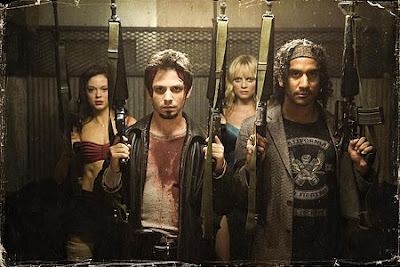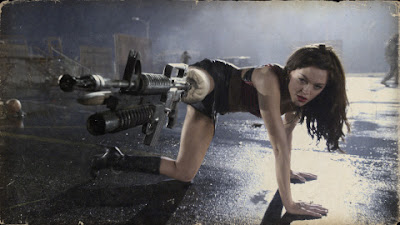Tribeca 2007: Day Five
 -Taxi to the Dark Side
-Taxi to the Dark Side
In this new documentary from Alex Gibney, the sad tale of Dilawar, a taxi driver from Yakubi, Afghanistan, opens a narrative on how torture became widespread as a panicked, desperate response to terrorism. The film covers the same territory as The New York Times or The New Yorker, and the picture isn't really worth a thousand words, considering that by now everybody who would be interested in this film has seen the infamous Abu Ghraib photos. But film is perhaps the most compelling medium for investigative research: the more carefully edited and thought out the documentary, the more powerful the ultimate message, especially when you give dramatic arcs to the characters serving as your talking heads (in this case, military soldiers brought up on charges).
Just as in Enron: The Smartest Guys in the Room, Gibney manages to convey all the necessary technical details of law that allowed the Bush Administration to, in effect, circumvent the law, reinterpret portions of the constitution, and pardon themselves of any wrongdoing that might eventually be uncovered. The bullet points are like live ammo, and terms like "PUC" (person under control) and "force drift" (when you slowly step up the interrogative measures from what's accepted under Geneva to what is deemed "necessary" to extract information) are easy to comprehend -- or easy to mock, as with the government's much-hyped semantic difference between NEC/NLEC (Non-Enemy Combatant/No Longer Enemy Combatant).
The evidence of wrongdoing is so apparent that it is often difficult to continue watching Taxi to the Dark Side: the rule of law has eroded, and the ultimate fare of this one-way ride to disaster has yet to be calculated. From the pop culture indoctrination of 24 to the ghoulish reality of our own terrorist-breeding camps (if they weren't before, they will be now), Gibney covers it all. There can be no doubt that psychological torture is as bad (if not worse) than the physical-- sticks and stones will break your bones, but words will drive you mad--and worse still is murder, which one prosecuted soldier accurately describes as "the ultimate torture."
-Chasing 3000
The mark of a good movie is when it is able to make even the sappiest of scenes work to its advantage. With Chasing 3000, director Gregory J. Lanesey and writer Bill Mikita are able to turn their demonstrable love of baseball (specifically Roberto Clemente) from mush into gold. The framework is the weakest portion, with Ray Liotta playing a grown-up Mickey who is racing traffic to get to a Padres game that is honoring his idol, but it soon relegates Liotta to a narrator, and focuses us on a story of two brothers, Mickey (Trevor Morgan) and Roger (Rory Culkin), their love for each other and for baseball, and on the romanticized '70s themselves.
This isn't a sports-centered film, though: instead, it trails the two brothers as they make a cross-country road trip to see Clemente make his 3000th hit. It's a feel-good film, made all the more emotional by Roger's MD, a medical condition that is never treated as a liability -- only as another obstacle to overcome. Being a kid's flick, there's no real danger of anyone dying in the film, which takes some of the suspense out of the boxcar jumping, or the midnight motorcycle ride, but these are the familiar limitations of family entertainment, and the moral lessons of the film are well worth any of the guff on the side.
-The Air I Breathe
Jieho Lee's fantastic urban fable is an allegory for the four emotional cornerstones of life (according to a Chinese proverb), but also a striking visual interpretation of our existence as well. Four subtly overlapping stories draw us in to a world in which innocent businessmen risk their lives for a taste of the something more that is happiness (Forest Whitaker, the opposite of Idi Amin here), where zoned-out pop stars living under the thumb of those with money have a chance to dig themselves out from their own sorrow (a generic Sarah Michelle Geller), where washed-up thugs understand what it means to live a life free of predestination (a brooding Brendan Fraser), and lonely doctors get a second chance to prove themselves and their love (a manic Kevin Bacon). Of course, they'll have to contend with mobsters (Andy Garcia, on loan from Ocean's Twelve) and their nephews (Emile Hirsch, who with smarter management could rival Shia LaBeouf), but this whimsically dark tale is exquisitely executed and ultimately inspiring. For all that it is a fragmented swirl of coincidences, so is life, and so the film serves to remind us of the pure mystery of circumstance that delivers each new child into the world (and what a beautiful, terrible, beautiful world).























